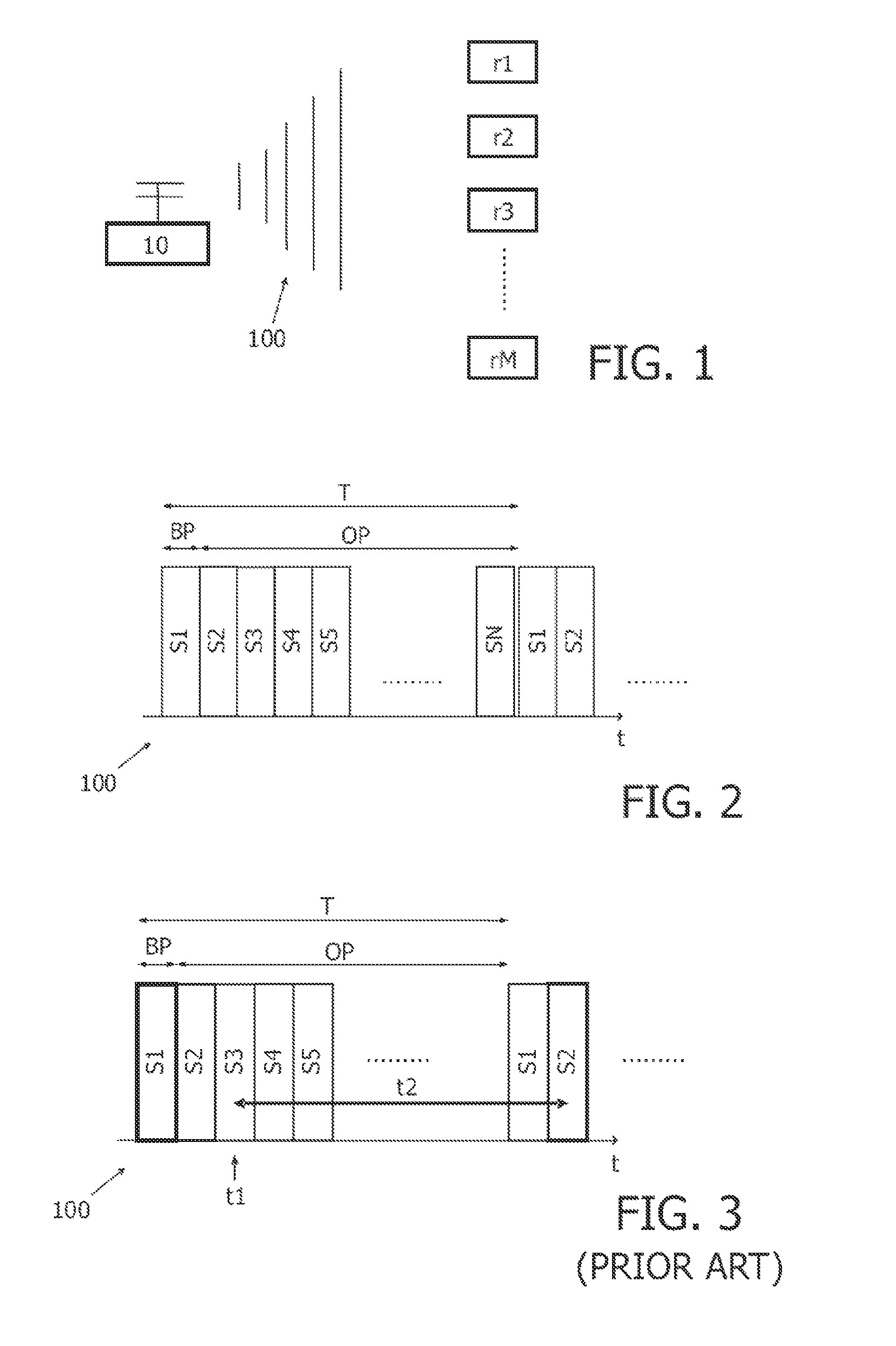Method and receiving unit for fast change of services
a technology for receiving units and services, applied in the field of methods and receiving units for fast change of services, can solve the problems of long time delay, inability to provide tv-on-mobile users with a fixed service, and the need to generate zapping data at the transmitting side, so as to achieve alleviation or eliminate the effect of reducing the delay
- Summary
- Abstract
- Description
- Claims
- Application Information
AI Technical Summary
Benefits of technology
Problems solved by technology
Method used
Image
Examples
second embodiment
[0053]According to the invention, if the currently next service do not have a random access signal portion (for example: with a video stream which can only be accessed after receiving an I-frame), the position of the I-frame inside the time slice (burst) of the currently next service needs to be considered.
[0054]Usually, after receiving an I-frame, the I-frame and its following frames can be played. But in zapping mode, if the I-frame is received very late in a time slice, the I-frame and its following frames within this time slice can only be played a very short period, and therefore, in order to seamlessly merge with the next time-slice, the playable time for this time slice is determined not only by the receiving time of I-frame, but also by the time-slice cycle. In other word, since the playable time-length of the I-frame and its following frames within one time slice cannot cover the whole time slice cycle until the next time slice arriving, the playing time of the I-frame shou...
third embodiment
[0081]According to the invention, if the currently next service involves not only video packets but also audio packets, the synchronization of audio and video needs to be considered.
[0082]For choosing the earliest playable service, a method is proposed which comprises the steps of:[0083]calculating a set of video playable times of each following service according to each video packet contained in said following services, and calculating a set of audio playable times of each following services according to each audio packets contained in said following services, said each audio packets to be played synchronously with each video packets, said each following service being arranged to play at said video or audio playable time for playing seamlessly,[0084]selecting a set of latest playable times from each pair of said video playable time and said audio playable time corresponding to video packets and its related synchronous audio packets, and selecting an earliest playable time from said...
first embodiment
[0112]In a first embodiment, the service change memory Q stores which services have been received previously in a service change cycle through the available plurality N of services. Thus, the memory Q has N−1 entries and the memory keeps track of services that have already been accessed.
[0113]In a second embodiment, each service stored in the service change memory Q is allotted an expiration time t_ex and upon expiration of said expiration time t_ex the corresponding service is discarded from the service change memory Q. The service may be deleted from the memory Q or just flagged out as being expired. The expiration time t_ex is for example a preset time counting down to expiration. This time t_ex can be for example 1, 2 or 3 minutes. The expiration time t_ex can be preset during manufacturing or set by the user. Possibly, the expiration time t_ex can be set by the receiving unit r1 based on user zapping history, i.e. monitoring of user behavior (average frequency of zapping, avera...
PUM
 Login to View More
Login to View More Abstract
Description
Claims
Application Information
 Login to View More
Login to View More - R&D
- Intellectual Property
- Life Sciences
- Materials
- Tech Scout
- Unparalleled Data Quality
- Higher Quality Content
- 60% Fewer Hallucinations
Browse by: Latest US Patents, China's latest patents, Technical Efficacy Thesaurus, Application Domain, Technology Topic, Popular Technical Reports.
© 2025 PatSnap. All rights reserved.Legal|Privacy policy|Modern Slavery Act Transparency Statement|Sitemap|About US| Contact US: help@patsnap.com



